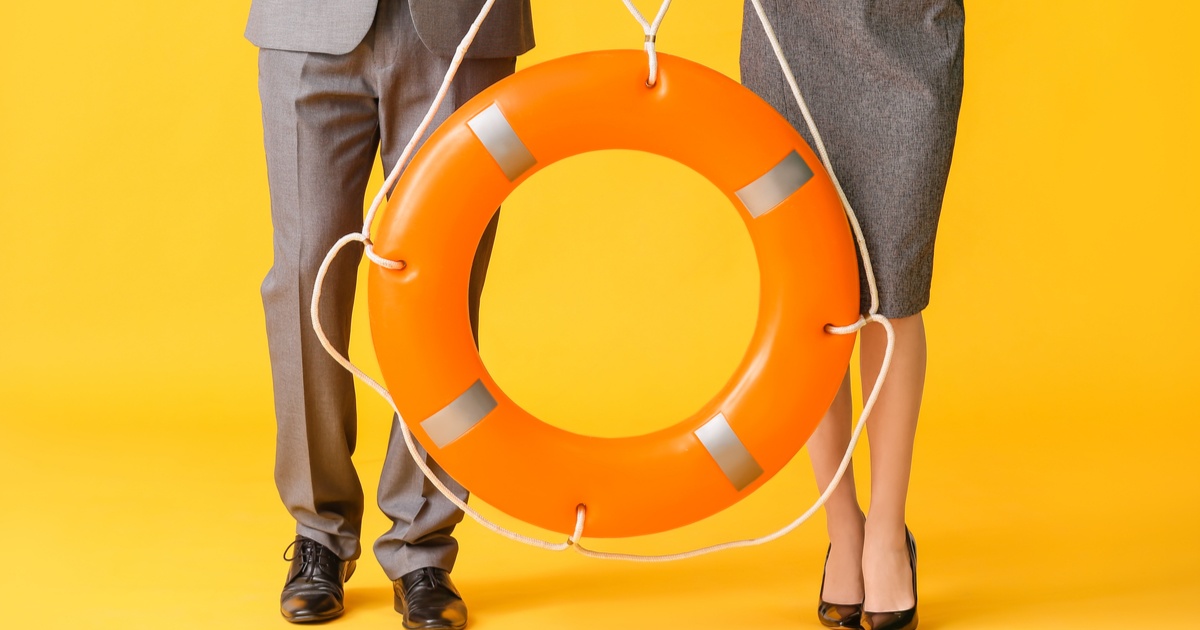A business emergency fund is crucial to keeping your business afloat during hard times. If you haven’t yet started one, here’s all you need to know.
What is a business emergency fund?

A business emergency fund is a set amount of money you put aside to use for emergencies that arise for your business. It is the safety net you need to ensure you can remain in business no matter what comes, like a pandemic.
For the slow months or those unexpected occurrences that come up, your emergency fund is the answer to your problems. It gives you the confidence you need knowing that whether unaccounted expenses arise, or revenue begins to drop, you’re covered.
Why do I need a business emergency fund?
A business emergency fund will help keep you calm and collected in the event of a serious emergency to your business. You might be thinking ‘that’s what lines of credit or loans are for’. But what happens when something like a pandemic occurs, and your funds are liquidated faster than you can account for. Will you be able to pay back those loans?
A business emergency fund can replace a line of credit or a loan. It also reduces the chance that you’ll have to use personal funds to keep your business alive.
And what about the slower months? The holiday season, for example, is a time when there are less appointments and more vacation time for both small business owners and consumers. Your emergency fund will help keep you going through that slower period.
How much should I keep in my business emergency fund?
Now that you know why a business emergency fund is important, the big question is ‘how much do you need’? Experts say it’s smart to keep between 3 to 6 months of your business expenses tucked away at all times. This means that if you take from your emergency fund, your first priority should be to replace that amount as soon as possible.
J.P. Morgan Chase found that the average small business only keeps 27 days worth of funds on the side. That’s less than a month’s worth of cash put aside and will likely not help much in the case of a real emergency.
Calculating the exact amount you’ll need in your business emergency fund is relatively easy. First, you’ll need to decide how many months you want to save. Then, you’ll need to know your monthly business expenses. Consider your operating expenses, employee salaries, marketing expenses and so on. Take a look at your cash flow statement and see how much you are spending on your business for the year and then divide by 12 to get an average monthly spend.
Finally, multiply that number by 3, 4, 5, or 6, depending on how many months you’d like to keep on hand. And voila! You have your magic number.
For example, if you spent $30,000 in expenses last year, your average monthly expenses would be $2,500. Say you decided to keep 5 months of expenses in your emergency fund, you would need to have $12,500 saved.
When should I use my business emergency fund?
Your business emergency fund is to be used for just that: emergencies. These are not liquid funds you can use for any occasion, like a gift for employees or customers. The money in your emergency fund is for the following:
- Months where business is slow
- Replacing or buying equipment for your business
- Pursuing new opportunities or expanding your business
- Buying or replenishing inventory
- Disasters like power outages, fires, floods etc.
- Technological issues such as a computer crashing
- Being sued or needing the funds for legal reasons
- Loss of revenue due to a recession
Though there are more reasons than those listed above, you get the drift. Don’t use the money in your business emergency fund for things you want, use it for things you need that you don’t already have the cash flow for.
How to create a business emergency fund

Creating a business emergency fund requires diligence and consistency. It’s no use having one if you’re dipping into it each time you get even a little stuck. Here are the best ways to open and maintain your emergency fund.
1. Open a HYSA
A high yield savings account (HYSA) can help kick start your savings in a significant way. Usually, HYSAs offer much higher interest rates than typical savings accounts, which will help your money make you money. The longer you keep your money in a HYSA, the more interest it will accrue and the faster you will be able to build up your business emergency fund.
2. Set up automatic transfers
In order to make sure you are contributing to your savings each month, set up automatic transfers on a monthly basis. Having a set amount of money transferred to your emergency fund each month will take the stress and added task away. You won’t need to remember to deposit money since you would set it and forget it.
3. Include your business emergency fund in your budget
When you’re creating your budget for the next year, be sure to include the contributions to your business emergency fund into your financial planning. Each deposit made is money you have to factor into your expenses and keep in mind when planning your next fiscal year.
4. Continuously check in on your operating expenses
Checking the heartbeat of your business operations is crucial to understanding how much you can put aside and deposit into your emergency fund. Maybe you’ve run out of inventory and needed to stock up extra this month. It’s likely that you’ll have less to deposit into your emergency fund. Make sure you’re constantly looking into your operating expenses so that you can make the smartest decisions about how much to save each month so that you don’t end up putting yourself in the red.
5. Save more during the good times
Having an exceptionally successful month? Great! Be sure to put a larger amount into your business emergency fund. Putting more away when you have the extra funds will help balance out those slower months where you invested less into your emergency fund.
6. Reevaluate your expenses
Checking in on your operational expenses is not enough to make sure you’ll have an emergency fund that will suffice to save your business when needed. You need to reevaluate your expenses as well. Are there places where you could be saving more? Perhaps you can switch suppliers to get a better deal. Whatever you can do to lower your expenses will help free up more cash to put into your emergency fund.
7. Be consistent and diligent
It’s easy to check your emergency fund’s balance each month and be tempted to use some of the money for non-emergency occasions. But don’t! The best way to get to an emergency fund that will help save your business is to remain diligent and consistently contribute to it. That way, the day you really are in trouble, you’ll be covered completely instead of wondering where all your savings went.
In case of emergency, break here
Emergencies happen, and there’s often no way to prevent them or even see them coming. That’s why having a proper safety net in the form of a business emergency fund can help you feel at ease if something does come up unexpectedly. You’ll know that you made the responsible decision to have a backup plan of at least 3 months of expenses handy, which is what every professional small business owner should do.





